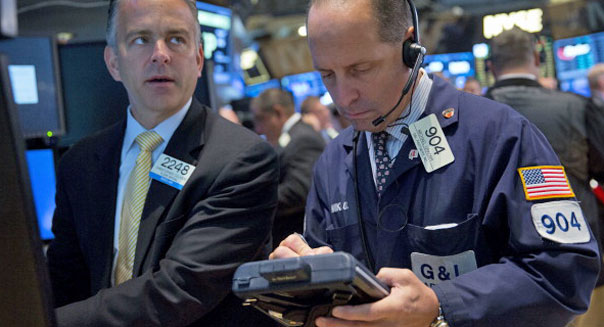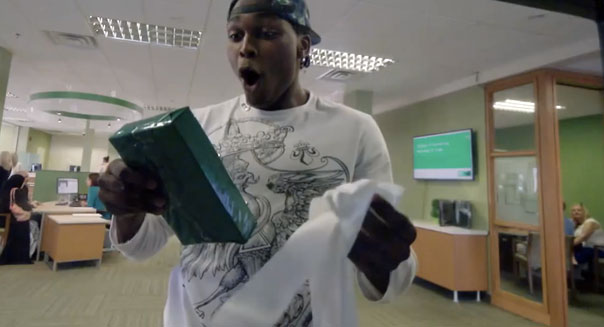Filed under: Inflation, Unemployment Rate, Economic Recovery, Federal Reserve, Interest Rates

WASHINGTON -- he Federal Reserve on Wednesday upgraded its assessment of the U.S. economy, taking note of a decline in the jobless rate and signaling more comfort that inflation was moving up toward its target.
Still, after a two-day meeting, Fed policymakers reiterated concerns about slack in the labor market and reaffirmed that it is in no rush to raise interest rates.
As widely expected, the central bank cut its monthly asset purchases to $25 billion from $35 billion, leaving it on course to shutter the program this fall.
"Labor market conditions improved, with the unemployment rate declining further," the Fed said in a statement. "However, a range of labor market indicators suggests that there remains significant underutilization of labor resources."
U.S. stocks turned modestly higher after the statement was released, while government bond prices extended earlier losses that had been spurred by a stronger-than-expected reading on economic growth. The dollar hit a session high against the yen.
Interest rate futures clung to the view that the Fed would raise borrowing costs from near zero in June of next year.
"The fact that officials still see excess slack in the labor markets as noteworthy suggests a high level of comfort with leaving rates very low," said Omer Esiner, chief market strategist at Commonwealth Foreign Exchange in Washington.
The Fed's policy-setting panel dropped a phrase from its last policy statement in June that had described the jobless rate as "elevated." Its emphasis on slack, however, indicated officials were looking at a broader range of indicators of the health of the jobs market and were still dissatisfied.
Inflation Moving Toward Target
As notable was the growing comfort officials signaled on inflation, which they had long worried was running too low.
"The committee ... judges that the likelihood of inflation running persistently below 2 percent has diminished somewhat," the Fed said.
Taken together, the shifts in the Fed's statement marked a small step toward an eventual rate hike. The Fed has kept overnight rates near zero since December 2008 and has more than quadrupled its balance sheet to $4.4 trillion through a series of bond purchase programs.
The Fed reiterated that it would likely keep rates near zero for a "considerable time" after its bond buying ends and restated that an "accommodative" policy was needed.
The government Wednesday said the U.S. economy grew at a 4 percent annual rate in the second quarter, a figure that likely amplified the debate within the Fed about how soon rates should rise.
Some Fed officials have expressed concern that the central bank risks overstaying its welcome with low rates and fueling an unwanted level of inflation. Others, including Fed Chair Janet Yellen, have argued that considerable slack remains in the economy and are wary of moving too soon.
Although Yellen believes the nation's 6.1 percent unemployment rate overstates the health of the jobs market, she warned earlier this month that a rate hike could come "sooner and be more rapid than currently envisioned" if labor markets continue to improve more quickly than anticipated.
Payroll-processor ADP (ADP) said Wednesday U.S. companies hired 218,000 workers in July, a solid pace but a bit short of economists' forecasts. A more comprehensive report Friday is expected to show nonfarm payrolls increased by 233,000 in July, which would mark the sixth straight month with job growth above 200,000.
-Additional reporting by Gertrude Chavez in New York.
 Janet Yellen and the Federal Reserve have released their statement for the July 29 to 30 FOMC meeting. As expected, we got more tapering of the monthly bond buying and we had no formal change in interest rates. Keep in mind that the headline GDP of 4.0% for the second quarter was closer to 2.3% if you use the inflation component, and the number may have been altered by revisions to the first quarter's drop.
Janet Yellen and the Federal Reserve have released their statement for the July 29 to 30 FOMC meeting. As expected, we got more tapering of the monthly bond buying and we had no formal change in interest rates. Keep in mind that the headline GDP of 4.0% for the second quarter was closer to 2.3% if you use the inflation component, and the number may have been altered by revisions to the first quarter's drop.











 The Conference Board Employment Trends Index, the so-called ETI, has been released for the month of July. It looks a tad better than Friday's unemployment and payrolls report. July's ETI rose to 120.31 from an upwardly revised reading of 119.92 in June. The Conference Board pointed out up front that this now represents a 6.6% gain in the ETI from July of 2013. July's increase in the ETI was driven by positive contributions from five of its eight components.
The Conference Board Employment Trends Index, the so-called ETI, has been released for the month of July. It looks a tad better than Friday's unemployment and payrolls report. July's ETI rose to 120.31 from an upwardly revised reading of 119.92 in June. The Conference Board pointed out up front that this now represents a 6.6% gain in the ETI from July of 2013. July's increase in the ETI was driven by positive contributions from five of its eight components.








